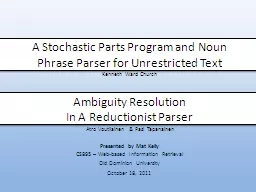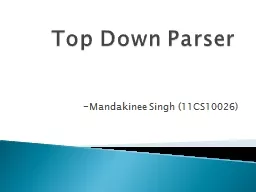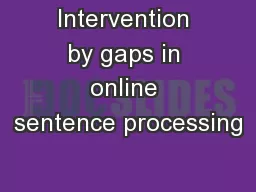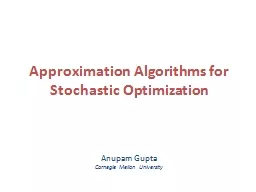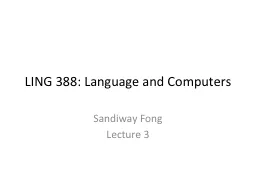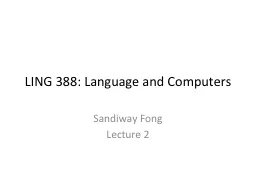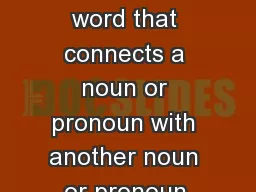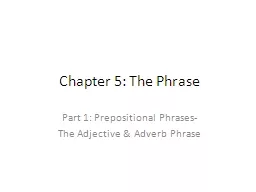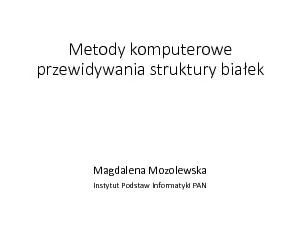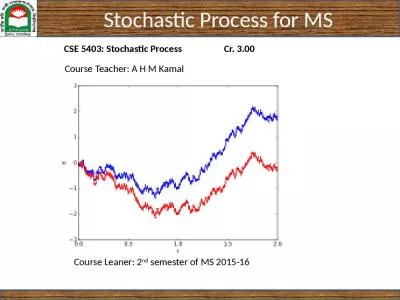PPT-A Stochastic Parts Program and Noun Phrase Parser for Unres
Author : mitsue-stanley | Published Date : 2016-06-13
Kenneth Ward Church Ambiguity Resolution In A Reductionist Parser Atro Voutilainen amp Pasi Tapanainen Presented by Mat Kelly CS895 Webbased Information Retrieval
Presentation Embed Code
Download Presentation
Download Presentation The PPT/PDF document "A Stochastic Parts Program and Noun Phra..." is the property of its rightful owner. Permission is granted to download and print the materials on this website for personal, non-commercial use only, and to display it on your personal computer provided you do not modify the materials and that you retain all copyright notices contained in the materials. By downloading content from our website, you accept the terms of this agreement.
A Stochastic Parts Program and Noun Phrase Parser for Unres: Transcript
Download Rules Of Document
"A Stochastic Parts Program and Noun Phrase Parser for Unres"The content belongs to its owner. You may download and print it for personal use, without modification, and keep all copyright notices. By downloading, you agree to these terms.
Related Documents

